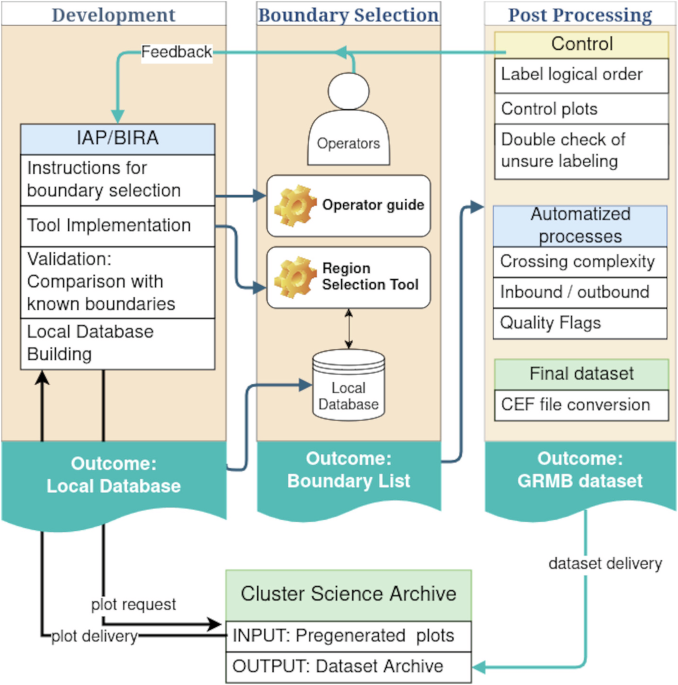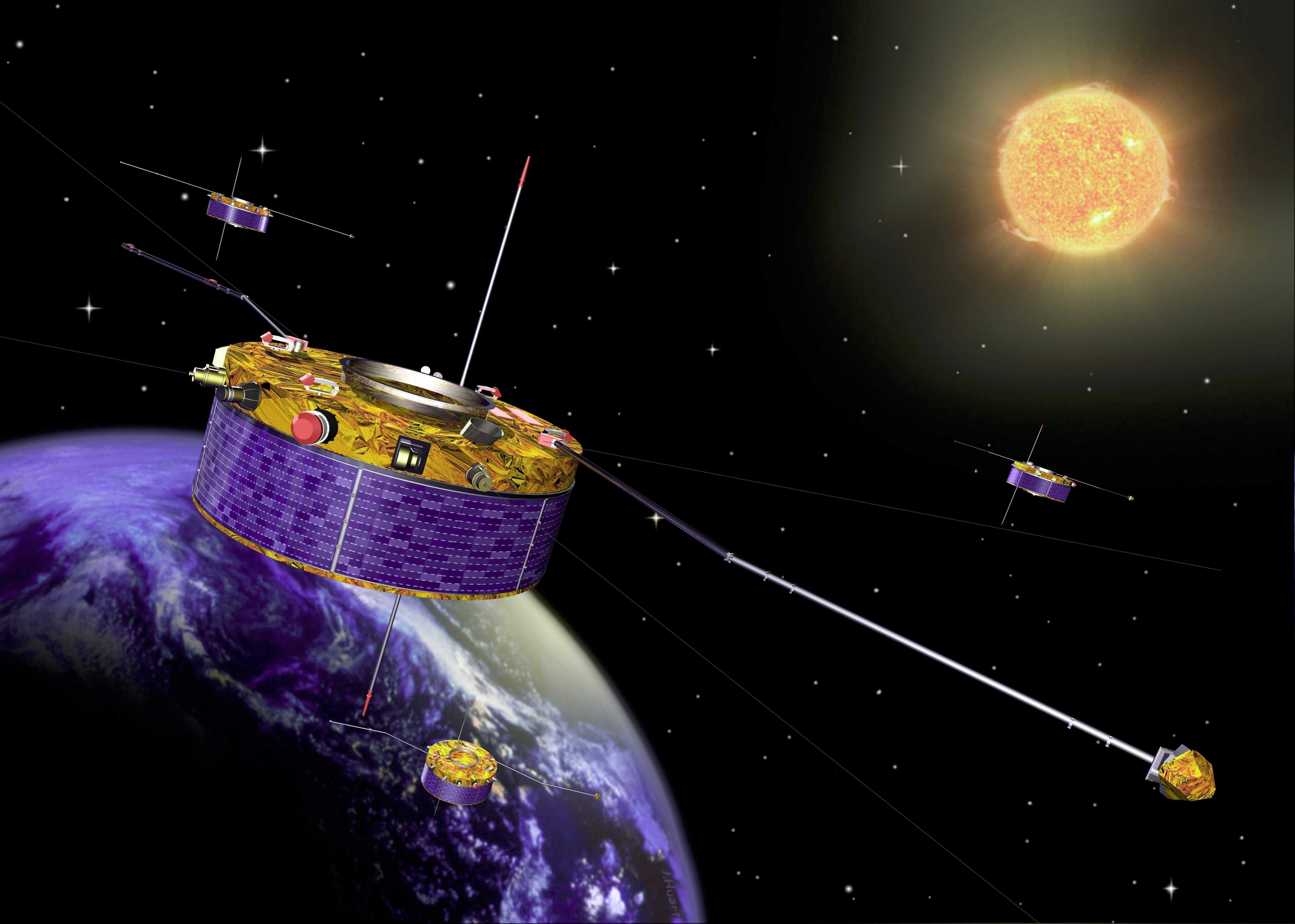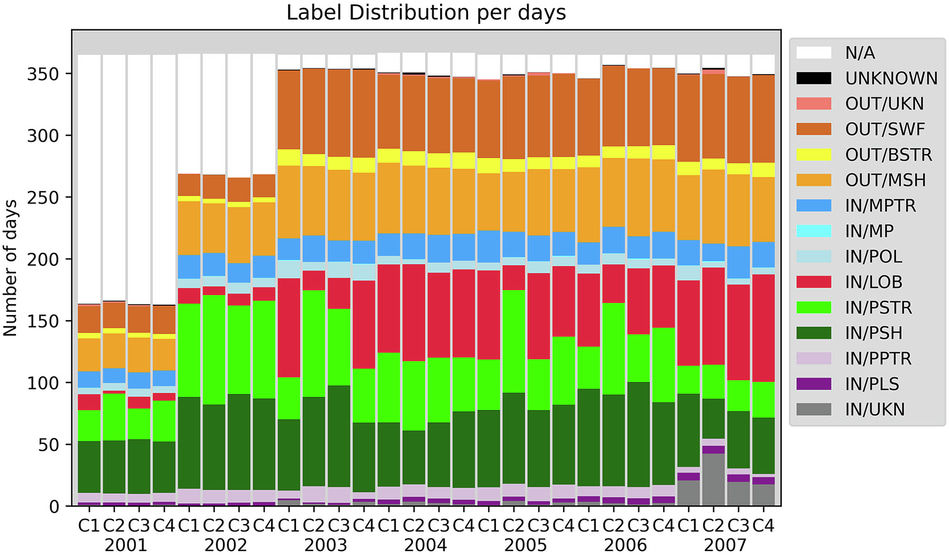Localisation of the Cluster satellites
Published in Astronomy, Earth & Environment, and Physics

Explore the Research

Localization of the Cluster satellites in the geospace environment - Scientific Data
Scientific Data - Localization of the Cluster satellites in the geospace environment
The Cluster mission
The European Space Agency's (ESA) Cluster mission was launched in summer 2000. It consisted of 4 identical satellites orbiting Earth in a choreographed dance, aptly named Rumba, Salsa, Samba and Tango. The mission ended in September 2024 with the re-entry of Salsa in the Earth’s atmosphere; the others will follow in November 2025 and August 2026.
The goal of this mission was to study the interaction between the solar wind and the magnetic bubble surrounding the Earth, the magnetosphere. Cluster collected unique data on the Earth's magnetosphere and the near-Earth solar wind using 11 scientific instruments over a period of more than 24 years.

The GRMB project
Thanks to their high-inclination elongated orbit, the Cluster spacecraft traversed almost all the regions of the magnetosphere. Since the shape and the size of the magnetosphere are continuously changing due to various space weather effects, knowing the position of the spacecraft is not sufficient to identify the region in which the satellite is situated.
Correctly classifying the measurements and identifying the corresponding regions and boundaries crossed by the Cluster satellites add value to the huge quantity of data acquired over more than 24 years. Being able to assign the data to specific magnetospheric regions enables statistical studies regarding the fundamental processes occurring in a particular region, such as plasmasphere refilling, reconnection at the magnetopause, turbulence or wave propagation in the magnetosphere.
ESA proposed a project whose goal was to do exactly this: the GRMB project, or Geospace Region and Magnetospheric Boundary dataset identification. This project started in October 2022 for a duration of 2 years under the responsibility of two partner institutes: BIRA-IASB (Royal Belgian Institute for Space Aeronomy) in Brussels, Belgium and IAP (Institute of Atmospheric Physics) in Prague, Czech Republic. This project has been extended by 2 more years to include the Cluster data recorded in 2023 and 2024.
The GRMB dataset
The first step of the project consisted in defining the geospace regions that serve as categories for the classification, their properties, and the relevant Cluster data products to identify them. A tool has been developed to be used by human operators to manually identify the regions and the boundaries between them.
This manual classification, based on pre-generated plots of 44 Cluster data products coming from 6 different instruments, covers 15 labelled regions, spanning from the plasmasphere to the solar wind: 4 labels cover the regions outside the magnetosphere, 9 regions inside the magnetosphere, and 2 categories reflect data gaps or intervals where the classification cannot be made (mostly due to insufficient data). This classification has been thoroughly validated in several ways, e.g. by checking for some physical quantities whether their values are compatible with the region associated to it.
The GRMB dataset is now also publicly available in the ESA Cluster Science Archive.
This paper describes the methodology used to build this dataset in full details. It describes the validation of the approach through different types of comparisons. One check consists of comparing the GRMB locations of some specific magnetospheric features with their predicted positions.

An example is shown on Figure 2 for the bow shock (shock wave formed where the supersonic solar wind starts to deviate around the Earth’s magnetosphere) and the magnetopause (boundary between the Earth’s magnetosphere and the shocked solar wind) for Cluster 1 (Rumba) in 2003, highlighting that the GRMB locations and the expected positions match very well.
Figure 3 summarises how often each Cluster spacecraft visited the different regions between year 2001 and 2007. The first two years contain a larger proportion of N/A data as the mission was still operating in a non-continuous observation mode. From 2003 to 2007, the Cluster satellites spent ~40% of the time in the 4 regions located outside the magnetosphere and ~60% in the 9 regions located inside.

Follow the Topic
-
Scientific Data

A peer-reviewed, open-access journal for descriptions of datasets, and research that advances the sharing and reuse of scientific data.
Related Collections
With Collections, you can get published faster and increase your visibility.
Data for crop management
Publishing Model: Open Access
Deadline: Jan 17, 2026
Computed Tomography (CT) Datasets
Publishing Model: Open Access
Deadline: Feb 21, 2026




Please sign in or register for FREE
If you are a registered user on Research Communities by Springer Nature, please sign in